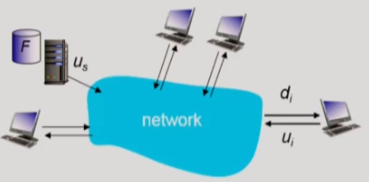package com.spring.batch.config;
import javax.sql.DataSource;
import org.springframework.batch.core.configuration.JobRegistry;
import org.springframework.batch.core.configuration.support.JobRegistryBeanPostProcessor;
import org.springframework.batch.core.configuration.support.MapJobRegistry;
import org.springframework.batch.core.explore.JobExplorer;
import org.springframework.batch.core.explore.support.JobExplorerFactoryBean;
import org.springframework.batch.core.launch.JobLauncher;
import org.springframework.batch.core.launch.JobOperator;
import org.springframework.batch.core.launch.support.SimpleJobLauncher;
import org.springframework.batch.core.launch.support.SimpleJobOperator;
import org.springframework.batch.core.repository.JobRepository;
import org.springframework.beans.factory.annotation.Autowired;
import org.springframework.beans.factory.annotation.Qualifier;
import org.springframework.context.annotation.Bean;
import org.springframework.context.annotation.Configuration;
import org.springframework.scheduling.quartz.SimpleThreadPoolTaskExecutor;
import org.springframework.transaction.PlatformTransactionManager;
/** https://docs.spring.io/spring-batch/docs/current/reference/html/job.html */
@Configuration
public class BatchConfig {
private static final String TABLE_PREFIX = "BATCH_";
private static final int THREAD_COUNT = 10;
@Autowired
private DataSource dataSource;
@Autowired
@Qualifier("txManager")
private PlatformTransactionManager txManager;
/** job 메타데이터에 대한 CRUD 제공 */
@Bean
public JobRepository jobRepository() throws Exception {
CustomJobRepositoryFactoryBean jfb = new CustomJobRepositoryFactoryBean();
jfb.setTablePrefix(TABLE_PREFIX);
jfb.setDataSource(dataSource);
jfb.setTransactionManager(txManager);
jfb.afterPropertiesSet();
return (JobRepository) jfb.getObject();
}
/** job 실행시키는 런쳐 */
@Bean
public JobLauncher jobLauncher() throws Exception {
SimpleJobLauncher jobLauncher = new SimpleJobLauncher();
jobLauncher.setJobRepository(jobRepository());
jobLauncher.setTaskExecutor(simpleThreadPoolTaskExecutor());
jobLauncher.afterPropertiesSet();
return jobLauncher;
}
/** 비동기처리 및 job을 thread pool 로 동작시키기 위해
* (quartz thread count 와 일치시켜야 함) */
@Bean
public SimpleThreadPoolTaskExecutor simpleThreadPoolTaskExecutor() throws Exception {
SimpleThreadPoolTaskExecutor stpte = new SimpleThreadPoolTaskExecutor();
stpte.setThreadCount(THREAD_COUNT);
return stpte;
}
/** 현재 실행중인 job 정보 및 job 제어 */
@Bean
public JobExplorer jobExplorer() throws Exception {
JobExplorerFactoryBean jfb = new JobExplorerFactoryBean();
jfb.setDataSource(dataSource);
jfb.setTablePrefix(TABLE_PREFIX);
jfb.afterPropertiesSet();
return (JobExplorer) jfb.getObject();
}
/** 현재 실행중인 job 정보 및 job 제어 */
@Bean
public JobOperator jobOperator() throws Exception {
SimpleJobOperator sjo = new SimpleJobOperator();
sjo.setJobLauncher(jobLauncher());
sjo.setJobRepository(jobRepository());
sjo.setJobRegistry(jobRegistry());
sjo.setJobExplorer(jobExplorer());
return sjo;
}
@Bean
public JobRegistryBeanPostProcessor JobRegistryBeanPostProcessor() throws Exception {
JobRegistryBeanPostProcessor postProcessor = new JobRegistryBeanPostProcessor();
postProcessor.setJobRegistry(jobRegistry());
return postProcessor;
}
@Bean
public JobRegistry jobRegistry() throws Exception {
MapJobRegistry mjr = new MapJobRegistry();
return mjr;
}
}















